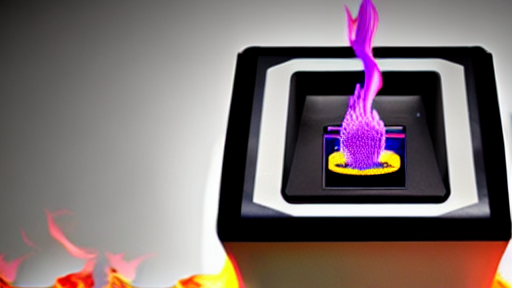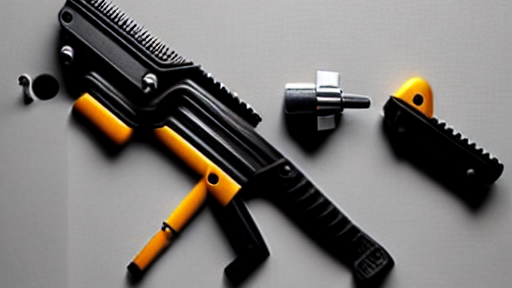The first time I used a 3D printer, it was an exciting experience. I was printing something from Thingiverse to see what the machine would do. The machine smelled like burning plastic, but that didn’t stop me from using it for more than 4 years. In fact, it’s part of what makes 3D printing so appealing: The ability to create anything you can imagine using only software and electricity.
However, not all printers are created equal—and while some suffer from hardware design errors or other minor problems in the manufacturing process that can be fixed without too much effort (like dust particles), there are also cases where your 3D printer could be on fire because of poor quality control or bad filament choice. While these issues might not ruin your day immediately if they’re caught early enough (and they often aren’t), they can result in hardware failures later down road if left unattended!
Hardware Design Errors
The most common hardware design errors are caused by the way a 3D printer is designed.
When you heat plastic, it begins to melt and then cool down. This process can produce some unpleasant odors, especially if you’re printing something that was designed with a different odor in mind (like wood).
The way we design these machines is important because they’re used for something so important: making objects! If there’s an error in your hardware design—which happens quite often—then your machine might not work properly or even worse, it could cause harm to someone who comes into contact with the fumes produced by burning plastic.
Too low printing temperature
If you’re experiencing this problem, it’s likely due to your printer’s temperature being too low. This can be caused by a few different things:
- The printer is not hot enough to melt the plastic and cause a chemical reaction that causes smoke.
- The printer is not hot enough to cure the plastic and make it ready for release from the print bed or extruder nozzle.
Dirty extruder nozzle
The part that melts the plastic is called the extruder nozzle. This piece can become clogged with debris and cause odor issues. To avoid this, it’s important to keep your extruder nozzle clean at all times.
You can easily do this by using a toothbrush or pair of tweezers to remove any debris from your nozzle before each print job begins. It’s also recommended that you clean out your extruder after every few prints so that there are no leftover particles within its walls—this will prevent them from building up over time and causing odors when they come into contact with heated filament later on in production!
Non-optimal filament type or material properties
While the smell of burning plastic is not necessarily a bad thing, it can lead to issues with your 3d printer. It’s important to understand why this happens and what you can do about it.
The first reason for this problem is that different materials have different properties, meaning some materials are more prone to burning or jamming than others. For example, some plastic types are more likely to burn when heated up (like PLA), while others might shrink when exposed too much heat (like ABS). You’ll also want to take note if there were any design changes made between your last print job and this one—for example, did you change filament type? Did you use an older version of firmware? Did this happen after upgrading/downgrading software in general?
Neglecting the cleaning of old prints, debris or dust particles
The smell of burning plastic is not just a side effect of 3D printing, it’s actually caused by neglecting to clean your 3D printer regularly. In fact, if you don’t clean your 3D printer regularly, it will start to smell like burnt plastic—and this can get pretty bad!
To prevent this from happening:
- Make sure that any old prints are removed from the machine before starting work on another print job. You don’t want leftover debris sitting around for days or weeks at a time (especially if they’re not being cleaned).
- Cleaning out all extruder parts at once is also important because dust and other materials accumulate inside them over time; if left unchecked these particles can cause smells in the air surrounding your machine too! If possible make sure that each extruder has its own designated container so as not to mix them up when cleaning out various areas throughout their respective chambers within said chamber.”
The Drive Gear is Damaged or Worn Out.
The most common cause of the smell is a damaged or worn out drive gear. A drive gear is an important part that helps move your 3D printer’s nozzle around when it prints. If this part is damaged, you may notice that the printer doesn’t move properly and will not print anything at all. The smell could also be coming from another part of your machine: if there are any other parts inside that aren’t working properly (like belts), then they could be causing bad smells as well!
To fix a damaged drive gear yourself, you can use some duct tape to wrap around it until everything feels snug together again—this can help prevent future damage while keeping things running smoothly until they’re fixed!
Layer Shift Has Occurred.
Layer shift is a common issue with 3D printers. It’s caused by many things, but the most common are:
- Not enough filament – if your printer doesn’t have enough filament, it will be unable to print at all. This can be due to a number of reasons: too much or too little pressure on the print bed; not enough or too much heat; etc., but in general, this happens when you run out of filament before your job is finished.
- Filament is too thin/thick – this causes layer shift because it causes a greater distance between each layer of plastic as well as making them weaker than they would be if they were thicker so that when one breaks off from another (which happens often), then there is less resistance against what comes next and therefore creates more room for movement between layers depending on how many times you print something new every day!
3D printers don’t need to smell bad and you can often fix the issue with a couple of tweaks.
3D printers don’t need to smell bad and you can often fix the issue with a couple of tweaks. Don’t assume that it’s a hardware issue, check the software first. Don’t assume it’s a software issue, check the hardware first.
Conclusion
Don’t be afraid of your 3D printer. It will not bite and you don’t need to get rid of it. In fact, we think that this is a great opportunity for you to learn how to fix any issues with your machine so you can keep enjoying it for years to come! We hope this article has helped you understand what causes those awful smells and why they’re happening in the first place.


